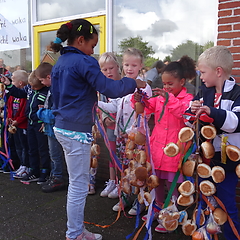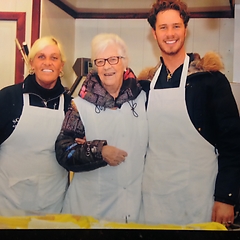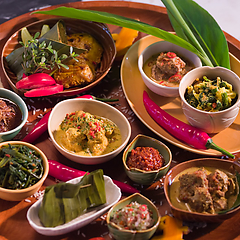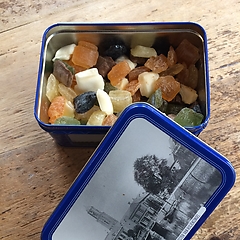Limburg syrup is boiled in copper kettles, on an open wood or gas fire. Ingredients are standard apple and pear cultivars, preferably unsprayed. The bottom of the kettle is covered with a small amount of water to prevent the fruit from burning. The kettle is filled with layers of pears and apples up to 2000 pounds or even more. Subsequently the fruit is covered with a cloth of natural material, like untreated jute or thick cotton. The steam in the kettle alters the structure of the fruit and the skins burst open in four to six hours. During this process the syrup maker must continually check the fire and adjust if necessary. The pulp that is created by the boiling process is put in a wooden press, with cloths in between. The pressed juice is roughly filtered and once more boiled in the copper kettle. It is reduced during a couple of hours, varying from four to fifteen, to about fifteen percent of the original weight. When the syrup has reached the right level of thickness, the syrup maker puts it in pots immediately. By post-ripening the syrup in the pot will get a more intense taste.



